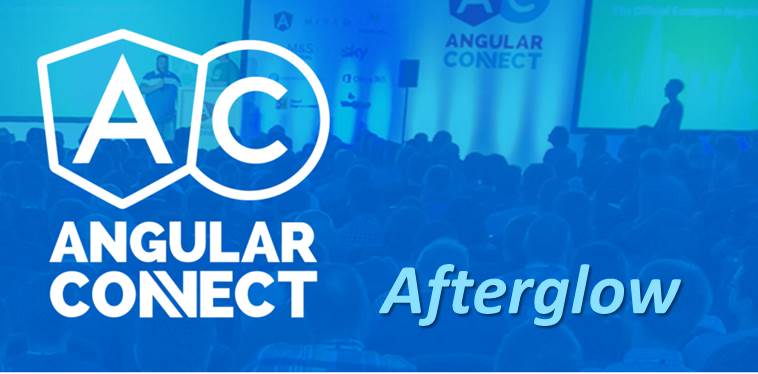The largest Angular conference to date recently closed its doors. Since Trasys is investing in the AngularJS framework we could not stand by and watch things unravel from a distance. We simply had to go over there and take a deep dive.
So a mixed team of architects/developers with a knack for front-end development was composed from Trasys Greece and Belgium. Aris and I packed our bags and headed to London.
It turned out to be a very inspiring conference with quality talks and very easy to approach speakers and Angular team members. As we’d expected the bulk of the content was geared towards the ever upcoming release of Angular 2, its derivatives and the path from 1.0 to 2.0. In the meantime all of the talks have been published on YouTube. Throughout this post you will find a selection of the most relevant and inspiring talks for you to watch. But if you can only watch one of them, make it this one.
Scalable enterprise Angular applications
It’s not the sexiest talk of the bunch. In fact it’s one of the few that applies to Angular as we use it today. However it crystalises the patterns and best practices Greek and Belgian Trasys (mostly self-proclaimed) front-end gurus have been working on for a while. The concepts we apply in our projects get a name (yes that is important, so we can be sure we talk about the same thing) and are very clearly explained at a high level without confusing you with implementation details.
Watch it, absorb it, apply it, and come talk to us if you need some pointers for a concrete implementation.
Related talks:
Reactive programming
It turns out Angular 2 is based on the RxJS reactive programming library for JavaScript. For instance the ubiquitous `$http` service will no longer returnPromises, but Observable streams and this will be the case wherever Angular 1 currently exposes Promises.
“You’re too old for this, but your kids are gonna love it!”“Why, this is all crazy future talk, Max!”, I hear you say. Well it doesn’t have to be: it’s extremely easy to wrap a Promise in an Observable and thus get us closer to Angular 2’s API today, rendering migration later next year less painful.
As a matter of fact your front-end gurus are currently looking into taking this even a step further. Observables are perfect candidates to implement the scalable architecture previously discussed. We’ll keep you posted on how this experiment unfolds.
Related talks:
Tooling
About a year ago we decided to push TypeScript as a more expressive language to transpile to JavaScript. Well actually, our chief architect did, and he had a tough time convincing the rest of us. It looks like he made the right bet: TypeScript is everywhere now. Angular 2 is built with it, Ionic 2 as well and almost every coding demo at the conference was done with TypeScript. Third-party library creators will be encouraged to publish a TypeScript type definition.
Last year we created a tool chain for you that takes care of kick-starting a new Angular 1.x project with automatic TypeScript, SASS and Angular template compiling, unit test running, code style checking and lots more. Turns out the Angular team just started working on a similar tool, calledangular-cli. It is nowhere near the level of completion of the build tool we are providing and for now it’s slower, but it’s definitely something to keep an eye on.
Related talks:
Migration path
Angular 2 has reached the status of being a nice tool to play with. Using the aforementioned CLI and following the guides on the new documentation site, you’ll be up and running in no time. It will soon be a nice tool to work with: some big Angular 2 projects at Google will go live in Q1 of next year and IE9 will still be supported.
This means it’s time for us to prepare migration. Well in fact, we’ve already been doing that by providing best practices, like component-based hierarchies. But now we have new means at our disposal: the Angular team is working on ng-upgrade, which will allow for gradually upgrading larger projects. We’ll also be looking into ng-forward, a library that allows you to write Angular 2 syntax in Angular 1.x code.
Related talks:
Mobile
There’s a lot of exciting stuff going on in the area of mobile development. These are the two highlights:
Ionic 2
The Ionic team announced the first public alpha release of their mobile framework based on Angular 2. Trasys picked Ionic as the go-to client-side hybrid framework, so we have a keen interest in this evolution. From what we’ve seen the new API is a lot cleaner than its predecessors. It should help you create cleaner application designs without effort.
NativeScript
This is not currently related to Trasys business (yet), but it’s so cool we just have to mention it. NativeScript is the next attempt to create a write-once-run-anywhere kind of framework for mobile. Only this time using the language and paradigms we already know, i.e. JavaScript and HTML. Thanks to Angular 2’s decoupled view rendering architecture it is perfectly suited to work together with NativeScript.
In other words: you write an Angular app and it will run as a real native app on iOS and Android devices alike (Windows on the way).
Related talks:
- Building cross platform apps with Ionic 2
- Building native mobile apps with Angular 2.0 and NativeScript
Wrap up
There were a lot of exciting topics at this conference and for brevity’s sake we cannot cover all of them in this post. So we focused mainly on the ones that will determine the direction we’ll be taking at Trasys.
If you’re in need for more food for thought, here’s our selection of interesting talks:
Testing
Miscellaneous















